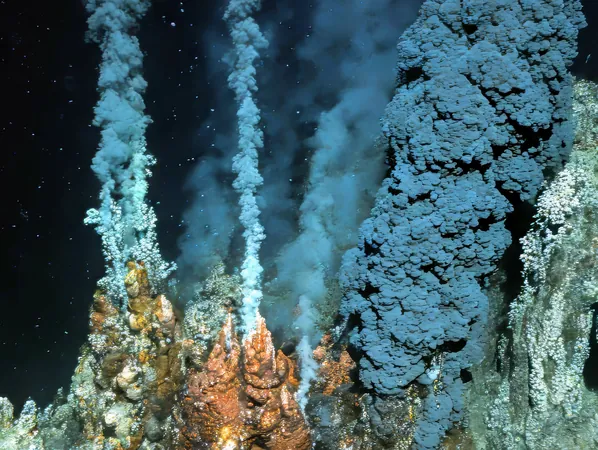
The Hidden Role of Ocean Iron in Shaping Earth's Climate
2025-08-23
Author: John Tan
When most people think of climate change, images of carbon dioxide and melting icebergs dominate the conversation. However, a less obvious yet critical player in this intricate dance is often overlooked: iron in our oceans.
A groundbreaking study from the University of Hawai‘i at Mānoa reveals how the iron levels in the South Pacific have dramatically changed over the past 93 million years, influencing marine life and altering the flow of carbon dioxide between the ocean and the atmosphere.
Why Iron Matters in the Ocean
Iron serves as a vital nutrient for phytoplankton—minuscule plant-like organisms that float in seawater. These tiny powerhouses absorb carbon dioxide during their growth. A deficiency in iron stunts their development, resulting in less carbon dioxide being sequestered from the atmosphere.
While the connection between iron and phytoplankton is well-established in contemporary science, the UH Mānoa team aimed to uncover how iron has influenced ocean ecosystems throughout history, analyzing deep-sea sediment cores harvested from remote oceanic regions.
The Evolution of Iron Sources
Leading the study, postdoctoral researcher Logan Tegler explained that five primary sources of iron have historically contributed to the South Pacific. These include dust, distant oceanic iron, two types of hydrothermal sources, and volcanic ash.
Initially, underwater hydrothermal vents were the predominant suppliers of iron. As time progressed, wind-carried dust began to play an increasingly important role, eventually dominating around 30 million years ago.
Iron Shifts and Climate Events
The research directly links variations in iron supply to major climatic milestones throughout Earth's history. During warm greenhouse periods—when polar ice was virtually nonexistent—volcanic ash and hydrothermal vents were the main contributors of iron, fueling marine growth.
As the planet cooled and Antarctica formed permanent ice sheets, the dynamics shifted. Stronger winds brought more continental dust to the South Pacific, establishing dust as the primary iron source and altering marine ecosystems. Interestingly, different forms of iron vary in availability to microorganisms, leading to significant changes in which organisms thrived.
Life in Iron-Starved Oceans
Understanding how iron has historically shaped ocean ecosystems opens up new questions about its impact on microbial communities. For instance, environments with consistently low iron may favor certain microbes, like diatoms, that are adapted to iron-limited conditions.
Currently, the availability of iron is a significant factor limiting phytoplankton growth, which in turn affects the amount of carbon dioxide that can be absorbed from the atmosphere.
A Surprising Modern Iron Landscape
Remarkably, Tegler notes that despite the South Pacific being viewed as an iron-poor region, recent findings indicate that it is experiencing the highest levels of dust deposition in the last 90 million years!
This is a result of various factors, including alterations in natural landforms, changing wind patterns, and human influences, presenting a stark contrast to historical conditions.
The Future of Iron and Our Planet
As human activities increase iron inputs to the oceans through industrial emissions and biomass burning, understanding the historical fluctuations of the iron cycle becomes essential for predicting future ecological impacts.
This research not only highlights how single nutrients like iron can influence ecosystems but also sheds light on the interconnectedness of our climate system. By tracing the changes in iron availability over millions of years, scientists can better prepare for contemporary environmental challenges and potential future shifts.
This study has been published in the journal Paleoceanography and Paleoclimatology.





 Brasil (PT)
Brasil (PT)
 Canada (EN)
Canada (EN)
 Chile (ES)
Chile (ES)
 Česko (CS)
Česko (CS)
 대한민국 (KO)
대한민국 (KO)
 España (ES)
España (ES)
 France (FR)
France (FR)
 Hong Kong (EN)
Hong Kong (EN)
 Italia (IT)
Italia (IT)
 日本 (JA)
日本 (JA)
 Magyarország (HU)
Magyarország (HU)
 Norge (NO)
Norge (NO)
 Polska (PL)
Polska (PL)
 Schweiz (DE)
Schweiz (DE)
 Singapore (EN)
Singapore (EN)
 Sverige (SV)
Sverige (SV)
 Suomi (FI)
Suomi (FI)
 Türkiye (TR)
Türkiye (TR)
 الإمارات العربية المتحدة (AR)
الإمارات العربية المتحدة (AR)